
BAJA: Temple of the Gods
2 months
14 people
unreal 4
technical designer
BAJA is an action game, where you play as an adorable chinchilla protecting the spirit world from evil coconuts.
Dodge and shoot your way out of the maze to retrieve the soul of Tiki and free the gods from their curse...
Designed and created in 2 months using Unreal Engine 4 as a 1st-year school project with a team of 14 members.
Trailer for BAJA recorded and edited by me.
Responsibilities
My responsibilities on BAJA were focused on design, audio and UX:
Below, I cover my work in each category in greater detail.

System Design
To prioritize replayability in BAJA, I designed the game loop around interlocking features with an emphasis on player choice. This resulted in a cohesive gameplay experience that made the game easy to play but hard to master.
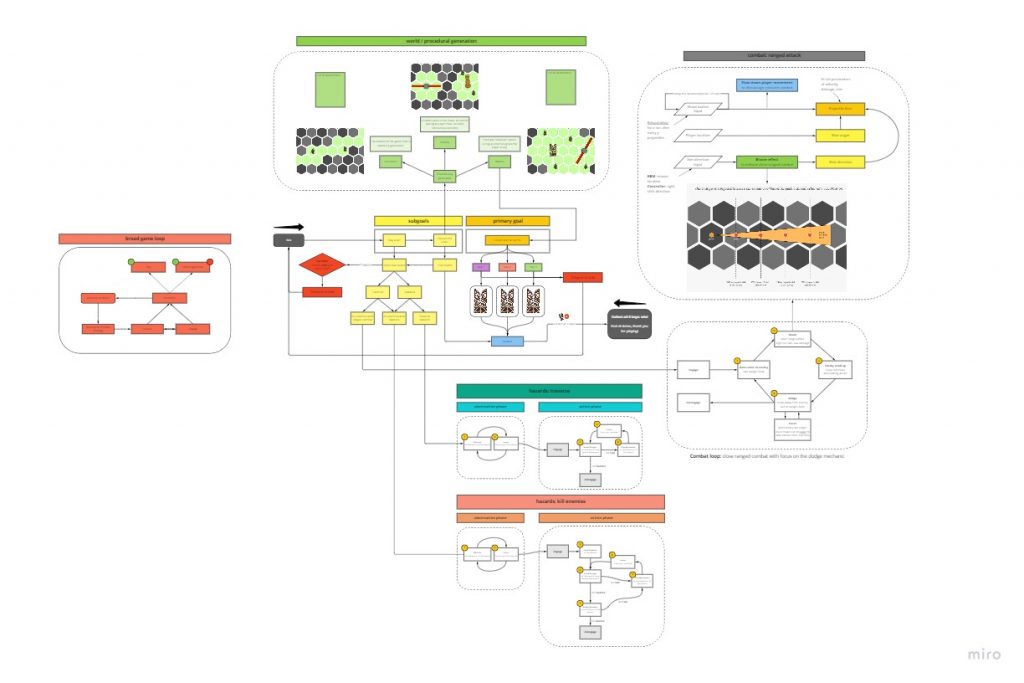
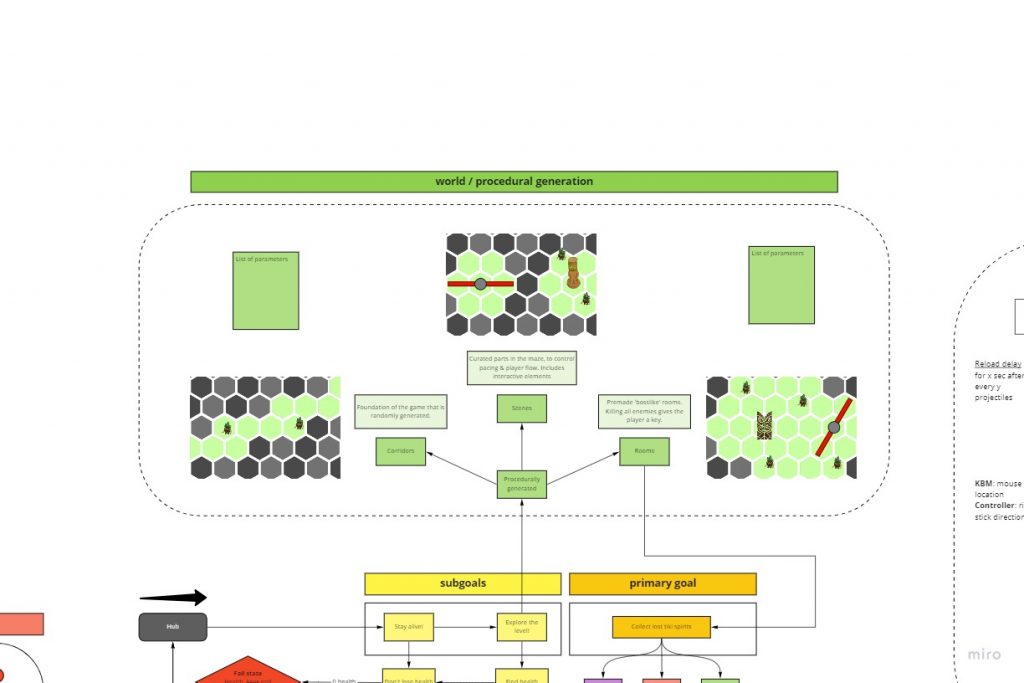
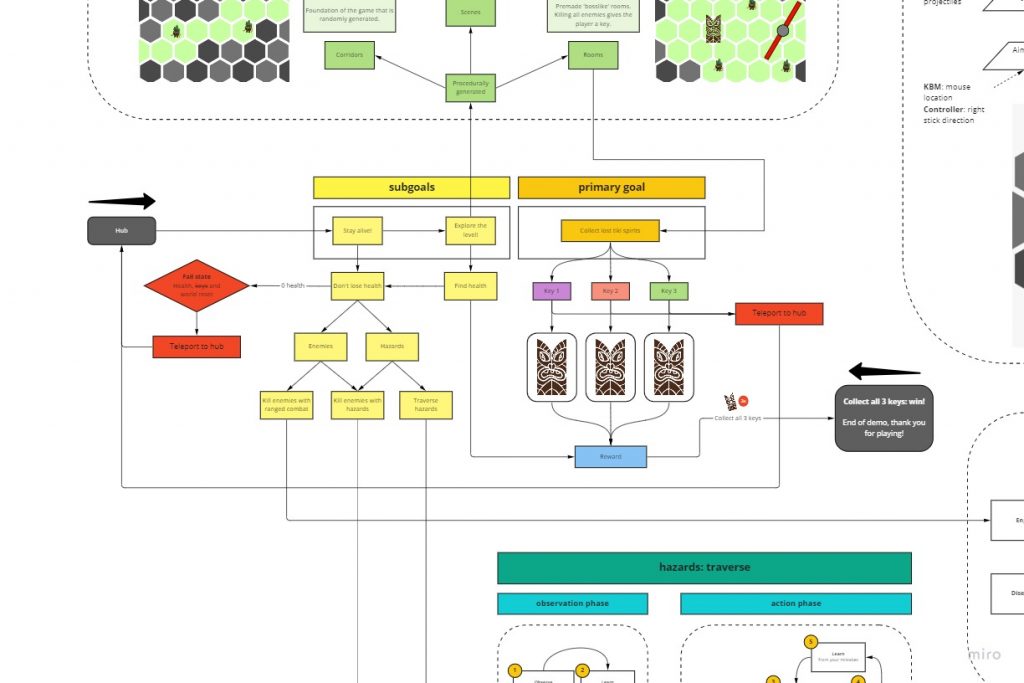
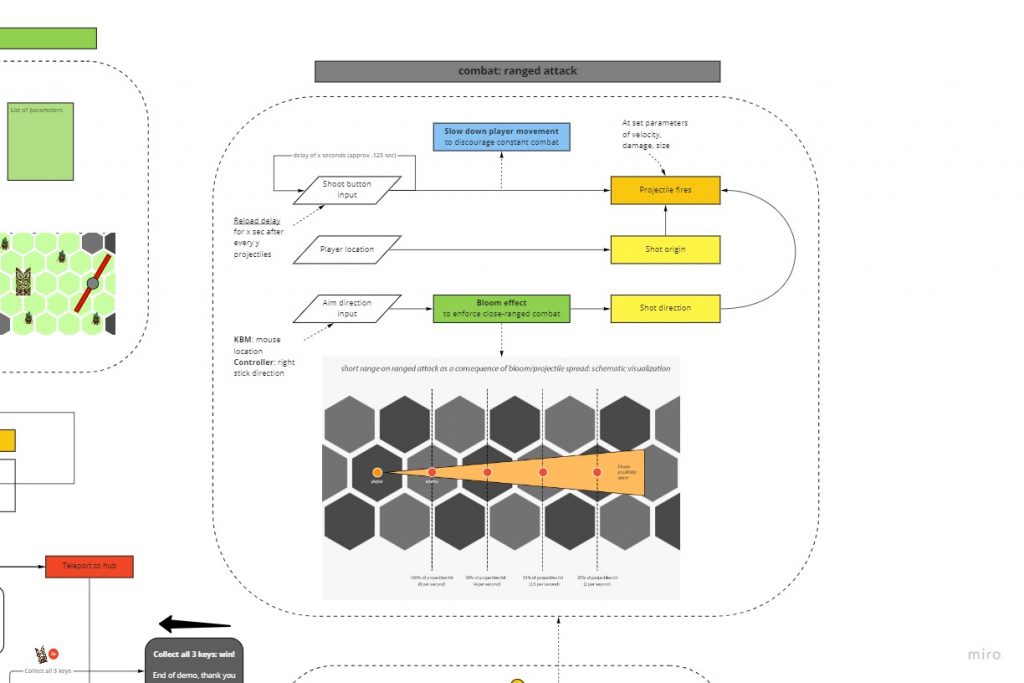
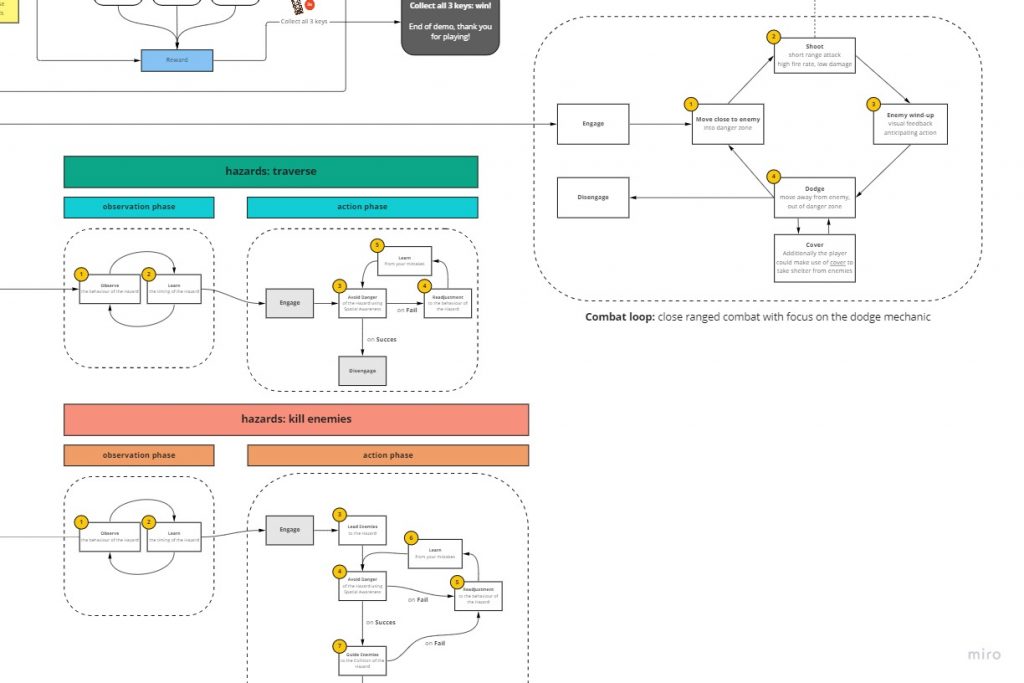
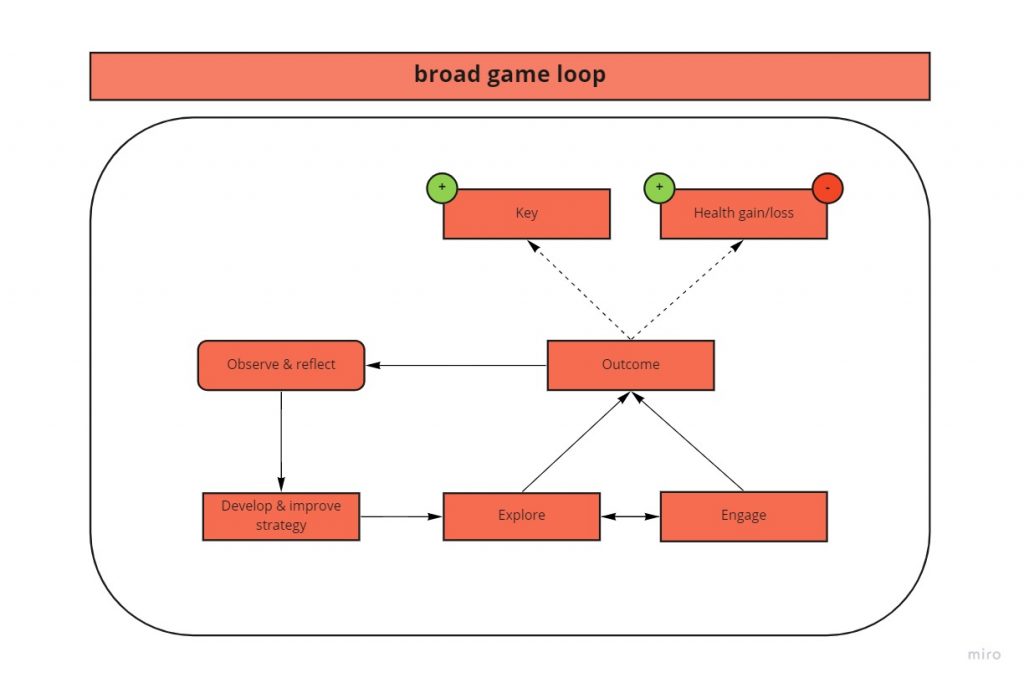
Slideshow of the core game loop I designed.
Dodge Ability
By conducting research into comparable games and incorporating feedback from playtesting, I designed the dodge ability: a fast and omnidirectional movement option that's satisfying to use. It sits at the center of the game loop allowing for:
- fast exploration
- avoiding enemy attacks
- reaching enemy weak spots
- maneuvering past hazards
Player using the dodge feature in combat.
Ranged Attack Ability
Through a similar process I designed the ranged attack feature to add challenge and make the player feel powerful.
A subtle bullet-spread rewards the player for getting close to enemies and taking risks, while lowered movement speed rewards tactical positioning and discourages the player from spamming their attack.
Player using the ranged attack feature .

Ranged attack bloom breakdown, found in the core game loop.

Combat loop, found in the core game loop.
Because bullet spread makes aiming easiest from up close, a dynamic occurs where the player can get close to shoot enemies and then dodge back to safety once the enemy starts winding up.
Movement & Camera
The camera is designed to follow the player's aim direction, offering clear visual feedback and facilitating exploration.
Additionally, the camera is dynamic, adjusting its zoom based on the environment's size to provide the player with adequate information for any given situation.
The general scale and speed metrics were adjusted multiple times based on feedback from playtesting.
3Cs during a combat section.
Game Feel
I was responsible for making the player feedback satisfying and cohesive.
Making the feedback satisfying was mainly about increasing what was already there: a faster fire rate, bigger enemies, brighter VFX etc.
For making the game cohesive I kept close communication with the responsible visual artists.
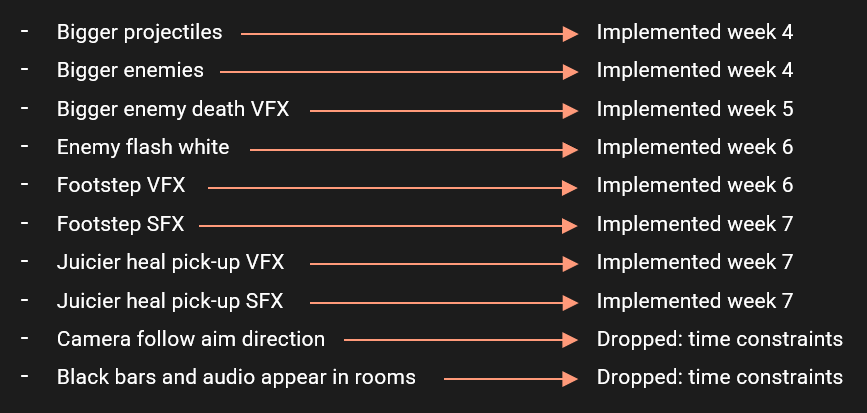
Game feel improvements implemented in order of priority.
Audio
To ensure an efficient workflow, I implemented audio in order of assigned priority and frequently asked teammates for feedback. Below you can find a small selection of audio I made:
Shoot
Heal
Trap wind-up
Portal
Damage
Trap activate
Reflection
We were not able to create the game to the full extent that we concepted. The game was intended to be a roguelike with procedurally generated levels. However, due to a lack of time and personal issues within in the team, we had to cut down on features including this procedural generation.
Seeing the game that I envisioned go down due to external factors proved to be difficult, but it did teach me a lot about scope and compromise.
We also had very little time for concepting. Within a day of the block PR and VA were already waiting to receive tasks from DP, and so the concepting phase ended up getting rushed, which caused some problems down the line.
Some of the most important lessons I learned:
- Do not rush the concepting phase. See it as time invested. Convince the other disciplines that solid research is required and will spare trouble later in the project.
- Game feel can either make or break a game.
- Buffing a character over-time will only result in an inverted flow diagram unless the challenges presented also get more difficult.
- The hamburger model is very effective for giving feedback while strengthening team bonds.